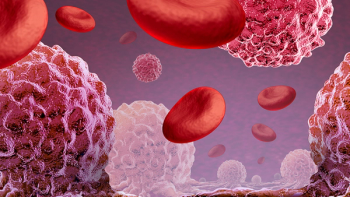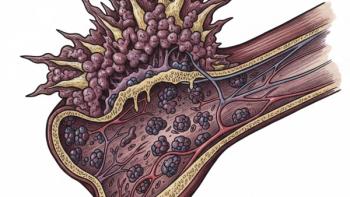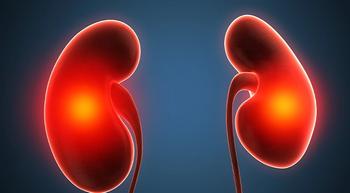
September Blood Cancer Updates: What Patients Should Know
Key Takeaways
- Iberdomide, combined with Darzalex and dexamethasone, improves MRD negativity in relapsed multiple myeloma, showcasing CELMoDs' potential in treatment.
- Early-stage blood cancer diagnosis and personalized treatment approaches are crucial, guided by genetic and cytogenetic findings.
Recent clinical trial results, real-world safety data, and patient experiences highlight meaningful advances in blood cancer care.
As September concludes, the landscape of hematologic oncology continues to evolve, spanning the full spectrum of blood cancer care. Recent clinical trial findings, real-world safety data, and patient experiences illustrate significant advances in both treatment and patient outcomes.
Developments such as innovative drug combinations and updated long-term safety insights for therapies like Jakafi (ruxolitinib) reflect a continued focus on personalized treatment for patients with hematologic malignancies. Moreover, the growing emphasis on patient self-advocacy further underscore the importance of comprehensive, patient-centered care.
Here are five of the most significant blood cancer stories from September, offering insights for both clinicians and patients navigating the evolving field of hematologic oncology.
Iberdomide Combo Shows Higher MRD Negativity in Relapsed Multiple Myeloma
A phase 3 trial, EXCALIBER-RRMM, found that combining
“This result builds on our significant experience in both targeted protein degradation and developing new treatment options for patients living with multiple myeloma,” Anne Kerber, senior vice president, head of Development, Hematology, Oncology and Cell Therapy, explained in a report of the data. “Iberdomide represents the first of a novel class of medicines, called CELMoDs, which has the potential to create a new foundation for multiple myeloma treatment that may be combined with other therapies.”
Notably, early results also indicate that the combination maintains a safety profile consistent with prior studies.
Understanding Blood Cancer: Early-Stage Diagnosis and What It Means
New treatment innovations are continuing to shape patient care, emphasizing personalized treatment approaches guided by genetic and cytogenetic findings.
“We are developing — and continue to develop — new therapies for polycythemia vera. Even though it’s a rare disease, it’s still a very important condition, especially for the people who have it,” Dr. Aaron Gerds, of the Cleveland Clinic Taussig Cancer Institute,
What Makes a Stem Cell Transplant Program Stand Out
Integration of CAR-T therapy, gene therapy, and other cellular treatments has enhanced survival and quality of life for patients with blood cancers. The emphasis on collaborative care ensures individualized treatment plans and comprehensive support for patients throughout the transplant process.
Jakafi Treatment Linked to Increased Skin Cancer and Shingles Risk in Myelofibrosis
Real-world data presented at the 2025 European Hematology Association Congress revealed that
"In this large sample of patients with myelofibrosis, we found a higher incidence of non-melanoma skin cancer in patients treated with Jakafi, especially when exposed for at least three years, but not a higher incidence of other solid tumors," researchers stated in an abstract presentation of the data posted to the Congress' website. "We confirmed a higher rate of shingles that rose with treatment duration."
These findings underscore the importance of ongoing monitoring and patient education regarding potential risks associated with prolonged Jakafi therapy.
The Role of Awareness and Self-Advocacy in Multiple Myeloma
Tamara Mobley’s emphasizes
Mobley now raises awareness about subtle warning signs and encourages patients to trust their instincts and persist in seeking care. Her experience highlights the value of self-advocacy when navigating the healthcare system.
“Although I had gone to a couple different doctors and even an emergency room at one point, I didn't get any real response that led to the diagnosis until it got so bad that I said, ‘You know what? Something's not right,’” she emphasized in an interview with CURE.
References
- “New Drug Combo Shows Deeper Responses in Multiple Myeloma,” by Spencer Feldman. CURE; Sept. 25, 2025. https://www.curetoday.com/view/new-drug-combo-shows-deeper-responses-in-multiple-myeloma
- “Bristol Myers Squibb Announces Phase 3 EXCALIBER-RRMM Study Evaluating Iberdomide in Combination with Standard Therapies Demonstrated a Significant Improvement in Minimal Residual Disease Negativity Rates in Relapsed or Refractory Multiple Myeloma,” by Bristol Myers Squib. News Release; Sep 23, 2025.
- “What Does a Blood Cancer Diagnosis Mean?,” by Ryan Scott. CURE; Sept. 5, 2025. https://www.curetoday.com/view/what-does-a-blood-cancer-diagnosis-mean-
- “What Makes a Stem Cell Transplant Program Unique?,” by Spencer Feldman. CURE; Sept. 23, 2025. https://www.curetoday.com/view/what-makes-a-stem-cell-transplant-program-unique-
- “Jakafi for Myelofibrosis Associated With Skin Cancer, Shingles Risk,” by Alex Biese. CURE; Sept. 16, 2025. https://www.curetoday.com/view/jakafi-for-myelofibrosis-associated-with-skin-cancer-shingles-risk
- “Safety Profile Of Long-term Exposure To Ruxolitinib In Patients With Myelofibrosis, Analysis From A Real-world Data Network,” by Dr. Alberto Blanco Sánchez, et al. 2025 European Hematology Association Congress; June 11 to 14, 2025; Milan, Italy. Abstract PF829.
- “The Importance of Awareness and Self-Advocacy in Multiple Myeloma,” by Ryan Scott. CURE; Sept. 29, 2025. https://www.curetoday.com/view/the-importance-of-awareness-and-self-advocacy-in-multiple-myeloma
For more news on cancer updates, research and education,





